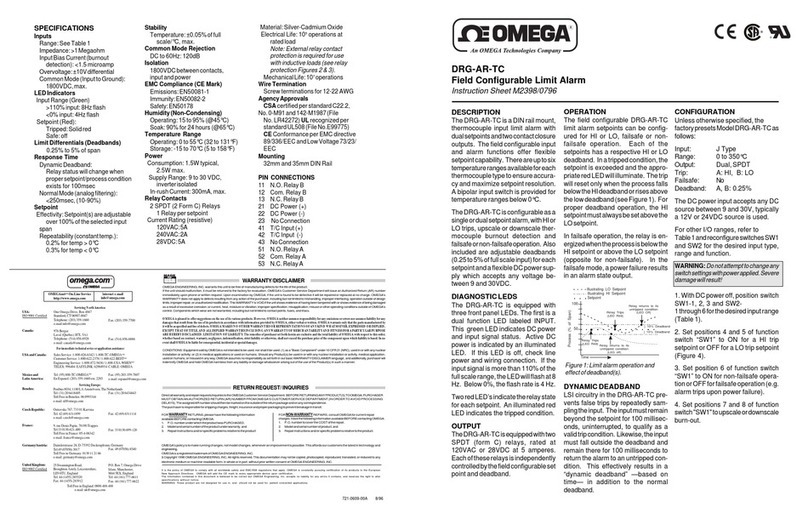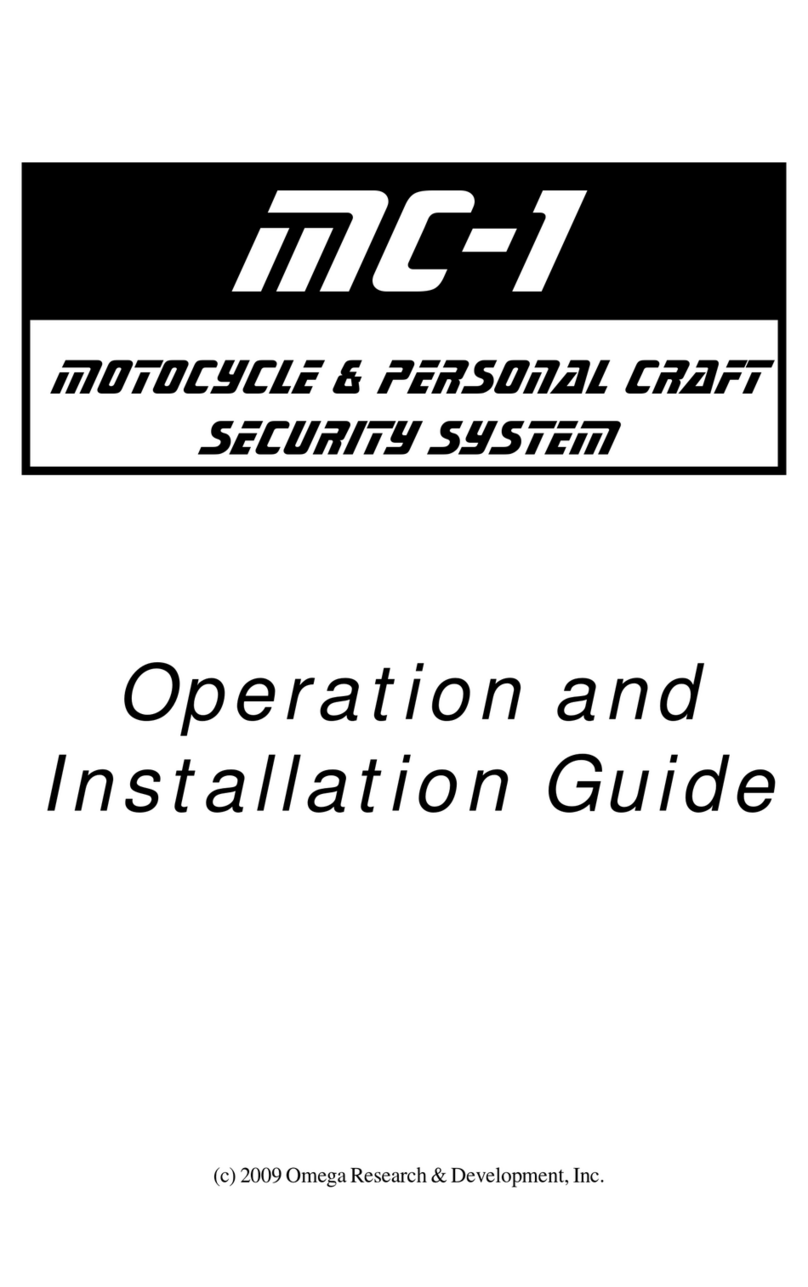Page - 10
While the System is Armed, and should it Trigger
Whilethesecurity systemisarmed, theStatus Light flashesred incolor.
Shouldany intrusionattempt be detected,the systemwill instantly activate,
or "trigger". Once triggered, the MAX-EDP loudly sounds the siren and
flashes the parking and interior lights on and off.
When it is first triggered, the Status Light changes its red flash pattern,
and the doors will automatically relock. Should a door be open when the
system triggers, it will wait until the door is closed, and at that time relock
the doors. The automatic relocking of the doors denies access to the thief,
and is just one of the many exclusive patented features of the MAX-EDP.
The siren will sound and the parking and interior lights will flash for 30
seconds unless you disarm the system first (60, 90 and 120 seconds
activated periods are options- see Feature #11, page 34). If all protected
entries are secure at the end of the 30 seconds, the system will stop and
rearm itself, ready to detect further entry attempts. If there is a protected
entry still open or the impact sensor still in a violated state at the end of 30
seconds, the system will reactivate for two more 30 second cycles. In this
case the system will stop after a total of 3 cycles and rearm automatically,
and then ignore only the open entry or violated sensor. When the entry is
closed or the sensor is reset, protection will begin instantly for the formerly
affected circuit.
Anytimethesecuritysystemtriggers, theStatusLightwillindicate which
protected zone triggered the system by flashing two, three or four times
between pauses, in the red color which indicates “alarm” operations. This
“Zone Violation” code will continue to flash, even after disarming. The
system can hold two different violation codes in it's memory, which is
cleared by turning the ignition switch "on".
OncetheMAX-EDPhasbeenactivatedandreset,thedisarmingconfirmation
changes to make the user aware that it has done so (see the following
“Disarming the System” section).
you have these options: put the system into Alarm Valet Mode (page 19),
leavethe door open, or, in most cases turning on the dome light may cause
the system to detect that your door is still open. Leaving the ignition key
turned "on" is not recommended.
Last Door Arming offers a high level of security, since you do not have
to remember to arm the security system every time you leave the vehicle,
and using it may entitle you to an insurance discount (please check with
your agent or carrier). Feature #15 Steady Siren or Pulsed Horn
Factory Default Setting Steady Siren
(press “arm/lock” button to program)
Options:
Pulsed Horn Low (press “disarm/unlock” button to program)
Pulsed Horn Medium (press “OPTION”button to program)
Pulsed Horn High (press red “panic”button to program)
It is important to understand that the MAX-EDP has a primary audible out-
put, for the electronic siren; and that it also has a programmable relay
which among its applications is being used to sound the vehicle’s existing
horn. This feature changes only the primary audible output, so that it can
be utilized to sound the existing horn by itself. This is for cases when the
programmable relay is desired for other features, such as unlocking the
doors, or as an additional ignition or accessory output should it be needed
for the remote starting operation.
The Steady Siren setting is exactly that- a steady output which the
electronic siren requires. When programming this feature for using the
output for the vehicle’s horn, the optional setting produce pulsed output on
the system’s siren wire, in three different pulse timings, which allow a de-
gree of customizing the horn’s sound during the alarm activation.
Page - 35
a system activation, or alarm, cannot occur. This Arming Delay allows the
system to completely process its sensory parameters, which can include
allowing the vehicle to stabilize. In some cases more time is needed than
thefactory-set3seconds,andthisfeatureoffersthreelongerdelay options.
Feature #16 Alarm Functions Bypass
Factory Default Setting Off (press “disarm/unlock” button to program)
Option: On (press “arm/lock” button to program)
This feature converts the system into a strictly Remote Keyless Entry Sys-
tem by eliminating all antitheft alarm-oriented operations and features.
When this feature is programmed on, the MAX-EDP has remote keyless
entry and engine starting operation only.
Feature #17 Ignition Activated Anti-Carjacking Protection
Factory Default Setting Off (press “disarm/unlock” button to program)
Option: On (press “arm/lock” button to program)
This form of Anti-Carjacking is initiated by the ignition key being turned on.
The Anti-Carjacking protection, and the three ways to initiate it are de-
scribed on pages 24 & 25.


































